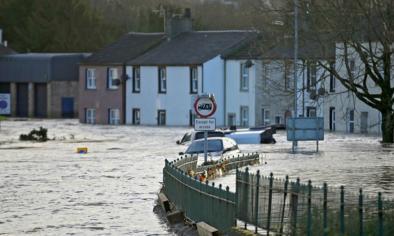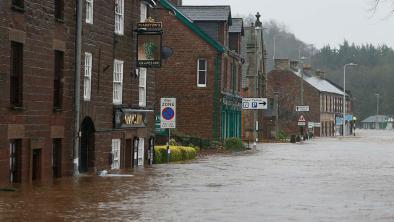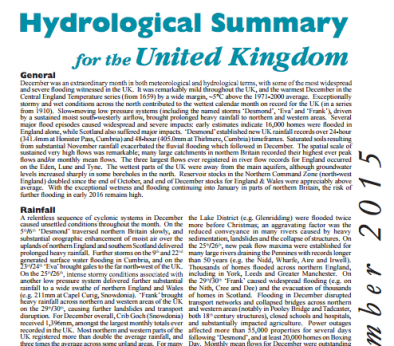Storm Desmond 2015
The severity of Storm Desmond that flooded the mountainous Cumbria region of the United Kingdom in December of 2015 is consistent with observed regional climate change trends and projections, including increases in the heaviest rainfall events and the occurrence of persistent atmospheric rivers. It’s likely Desmond gained strength from a combination of warmer than average Atlantic sea surface temperatures and an unusually moist atmosphere.
According to a study published in 2018, the likelihood of such an intense atmospheric river storm has already increased by 25 percent due to long-term climate change.[1]
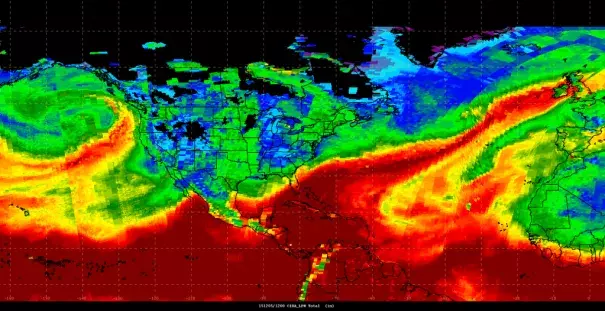
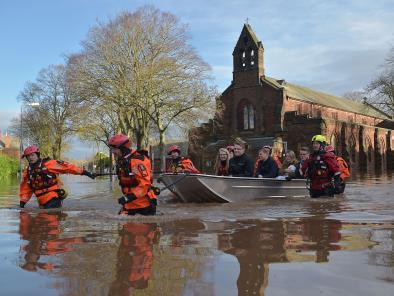
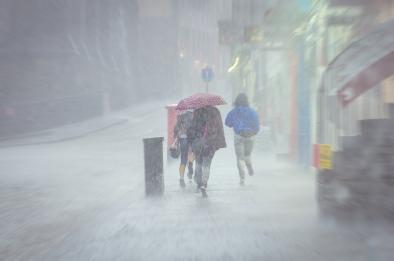

Global climate change increases the likelihood and severity of storms like Desmond
Storm Desmond—a 5,300-mile long atmospheric river storm, or relatively narrow, long stream of clouds and atmospheric water vapor—set new UK rainfall records for any 24 and 48 hour period from December 4-6, 2015.[1] The atmospheric river, which beat the previous 24 hour record by close to 30mm of rain,[1] caused massive flooding in much of the Cumbria region.
Although naturally forming atmospheric rivers are often the major cause of flooding in northern and western UK,[2] which encompasses the Cumbria region, they are expected—along with all other extreme seasonal rainfall events in this area—to occur more often as a result of anthropogenic climate change.[7]
Unusually warm Atlantic surface temperatures and increased atmospheric moisture to blame for the heightened chance and intensity of Storm Desmond
As increased greenhouse gas concentrations warm the atmosphere, it becomes significantly more moist, which leads to an increased likelihood of extreme rainfall events.[3][4] All of our understanding of atmospheric physics and our climate suggests a strong link between climate change and record-breaking winter rainfall.[1] Scientists have found a connection between climate change in the UK and increased extreme precipitation and river flow flooding.[5]
Increased atmospheric moisture, paired with sea surface temperatures along the storm's path that were 1.8°F (1°C) warmer than usual, are the two main consequences of man-made climate change that fueled this record downpour.
According to scientists, global climate change has already increased the likelihood of record rains, like the ones that resulted from Storm Desmond, by about 40 percent so far.[6]
Related Content
